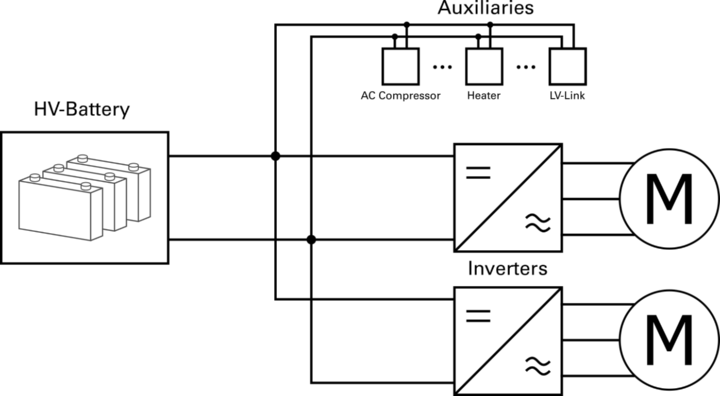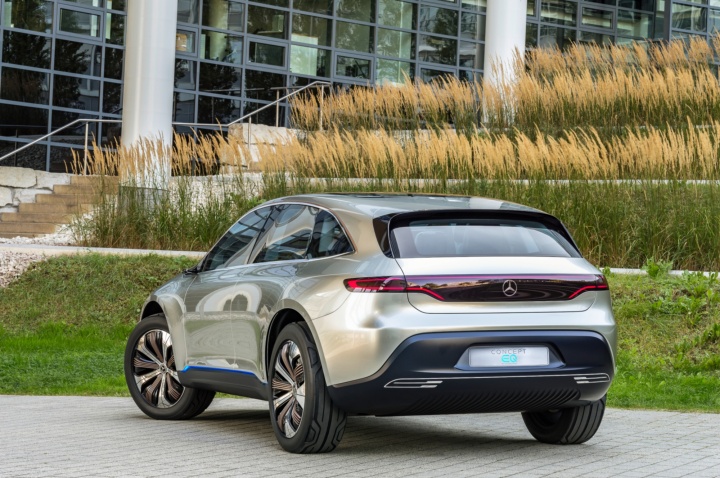Direct to
Description
The high voltage power net (HVPN) of electric vehicles integrates all high power electric components and provides the power flow between them. In contrast to vehicles with internal combustion engine, electric vehicles have a large demand for electrical power. To provide that efficiently, a voltage level of several 100V is chosen. The HVPN connects the HV-battery, inverters, several smaller components like DCDC-converter as interconnection to the low voltage link (12V), electrical refrigerant compressor and a heat element. All components are connected via appropriate cables to the HVPN. Due to integrated controls, input capacitors, double layer capacitance and parasitic effects and several other features, the HVPN results as an oscillating system.
The cyclical switching of power electronic components induce current harmonics, which, sent on the HV-Link, produce changing voltage levels. However, the voltage level must comply to several requirements in order to secure a stable operation. Therefore, the current and voltage dynamics have to be known, which is mainly achieved by extensive measurements.
With this research project, model based methods are applied to describe the current and voltage dynamics. Current spectra of several components and impedance descriptions of the HVPN with the consideration of e.g. controls and set points are required to obtain a result. The models are valdiated experimentally. Further, changes with regard to hardware design are intended to be considered.




